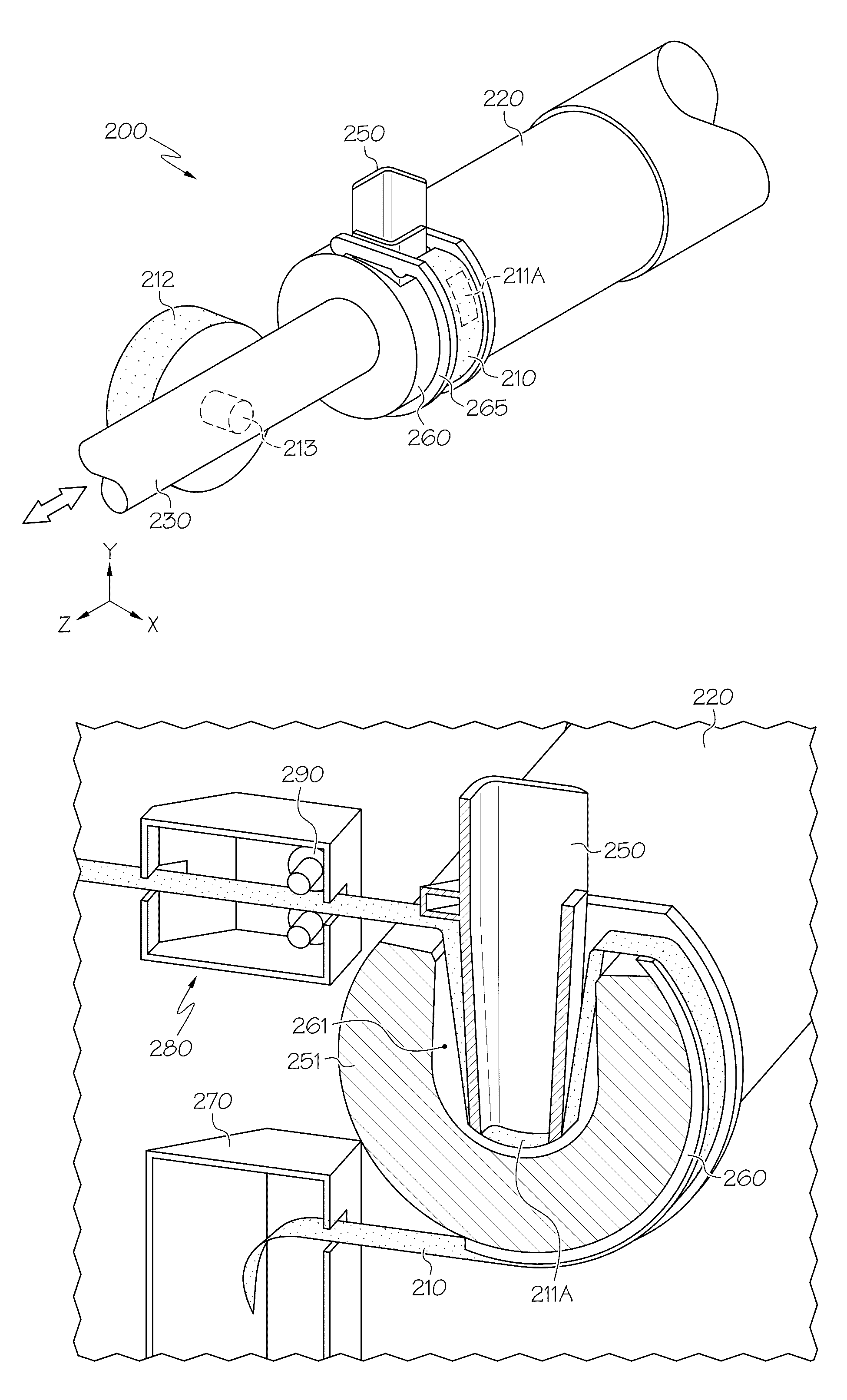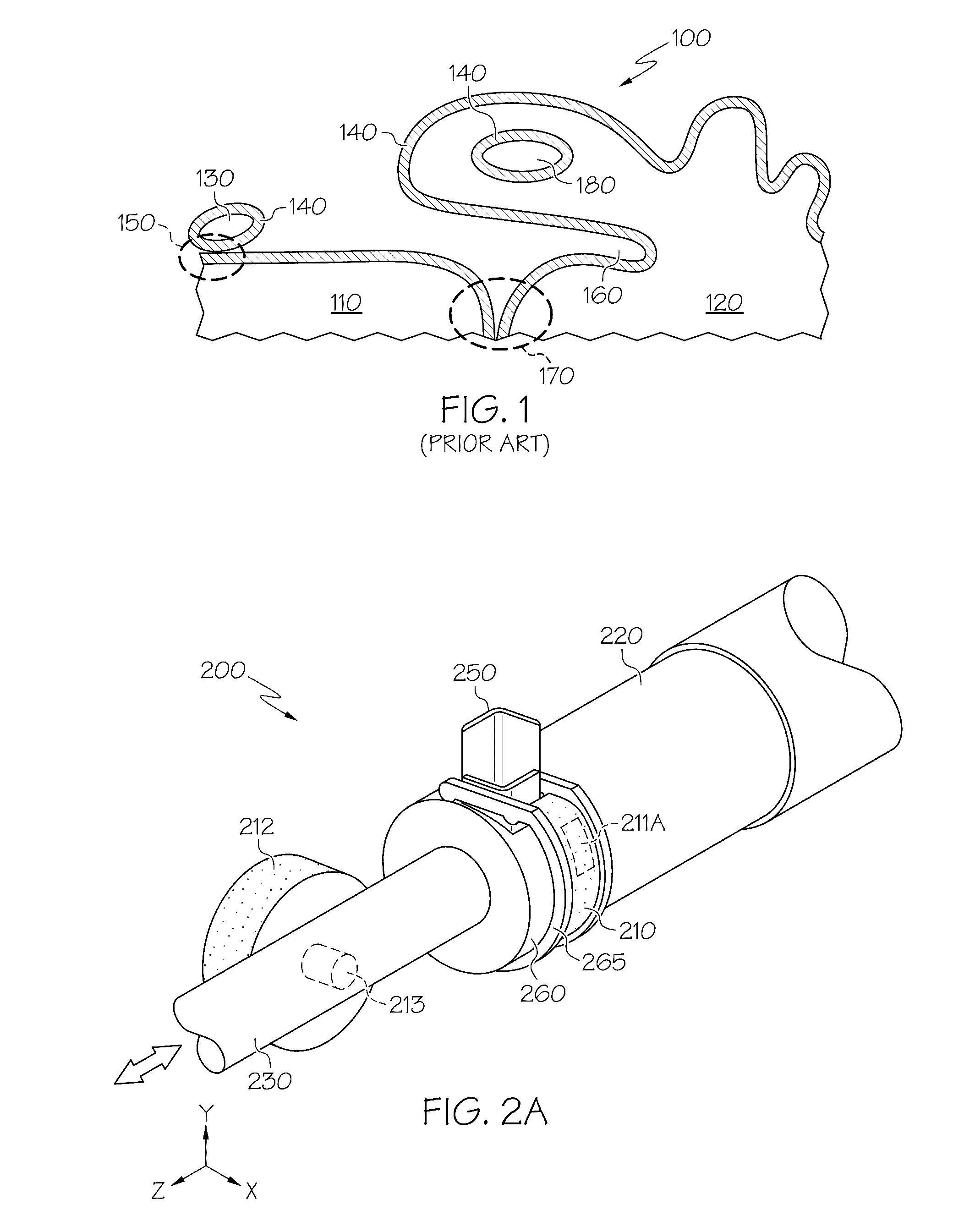Device and method for filtering molten metal
a technology of molten metal and filter device, which is applied in the direction of charge manipulation, furnace, and foundation moulding apparatus, etc., can solve the problems of undetectable high metal surface area and oxide film, system without cleaning mechanism of molten metal, and inability to fill turbulence, etc., to improve casting quality and improve the quality of molten metal
- Summary
- Abstract
- Description
- Claims
- Application Information
AI Technical Summary
Benefits of technology
Problems solved by technology
Method used
Image
Examples
Embodiment Construction
[0016]Referring first to FIG. 1, multiple forms of defects in an aluminum alloy are shown. Upon heating into liquid (i.e., molten) form 100, various streams of aluminum (for example, first stream 110 and second stream 120, as well as droplets 130) interact in varied ways. When processed in an oxygen-containing environment, oxide films 140 may form on the outer surface of the liquid aluminum, including the first stream 110, second stream 120 and droplets 130. A bi-film 170 forms when the two oxide films 140 from respective first stream 110 and second stream 120 meet. Bi-films also form when turbulence-induced droplets land on the metal stream, as shown at 150. While bi-films 150, 170 are an inherent part of almost every casting process, they are generally not detrimental to casting mechanical properties unless the oxide film 140 is entrained in the bulk of the alloy, as shown at location 160 due to the folding action when two separate streams, first stream 110 and second stream 120, ...
PUM
| Property | Measurement | Unit |
|---|---|---|
| width | aaaaa | aaaaa |
| width | aaaaa | aaaaa |
| diameter | aaaaa | aaaaa |
Abstract
Description
Claims
Application Information
 Login to View More
Login to View More - R&D
- Intellectual Property
- Life Sciences
- Materials
- Tech Scout
- Unparalleled Data Quality
- Higher Quality Content
- 60% Fewer Hallucinations
Browse by: Latest US Patents, China's latest patents, Technical Efficacy Thesaurus, Application Domain, Technology Topic, Popular Technical Reports.
© 2025 PatSnap. All rights reserved.Legal|Privacy policy|Modern Slavery Act Transparency Statement|Sitemap|About US| Contact US: help@patsnap.com



